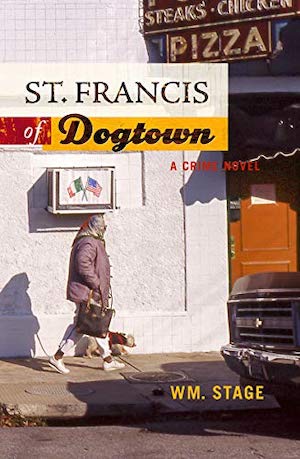
Francis X Lenihan is a process server in St Louis in the late 1980s. He is a free spirit who enjoys the independence and variety of his work, serving papers on people requiring them to attend civil court proceedings.
While doing an out-of-town call one afternoon Francis is accosted by a man in a muscle car who acts strangely and seems to try to dissuade him from making his planned visit. The significance of the man’s odd behaviour doesn’t become clear until some time after Francis has called at the house, got no reply, and left his business card. The police turn up and want to know what he was doing at a murder scene.
It would have been easy at this point for the story to follow a predictable path – Francis wrongly suspected, struggling to clear his name and so on. Instead, while the police view Francis with mild suspicion, his story checks out. However, a combination of curiosity and the request of the daughter of the victim, Rose, mean that Francis decides to pursue his own investigation into what he now knows is rape and murder.
St Francis of Dogtown is mainly narrated from the point of view of Francis, but at times follows the killer and his associates, a group of ne’er-do-well petty criminals who do not welcome the attention the murder brings. You also gain an insight into the thinking of the police.
Alongside the investigation runs the day-to-day life of Francis, and a celebration of Dogtown, the area of St Louis where he lives and, more particularly, drinks. This is an Irish-American culture which is recognisable from movies, books and TV, and has a particular flavour quite distinct from Irish or even Irish-British culture.
It’s a Guinness-infused mix of Catholicism, pubs, rebel songs and a particular kind of masculinity, which combines sentimentality and mindless violence. Francis is both an individualist who enjoys the freedom of his chosen career and someone who feels a deep attachment to his community and its traditions.
The opening chapters focus on Francis’ work as a process server. He is preparing to give a talk to students which provides a way for author Wm Stage to outline what Francis does without weighing down the story with exposition. There are some nice vignettes of him going about his work which provide an opportunity to demonstrate the different people and locations in St Louis, and how they contrast with the world of Dogtown.
There’s a lot going on in this book. Apart from the investigation into the murder and Francis’ day job, there is also his romantic life and a sub-plot involving the death of his father some years earlier. Francis is, on the whole, an appealing character, apart from his relaxed attitude to drink-driving.
These different elements work well together on the whole, although once the investigation takes hold there could perhaps be fewer process-server anecdotes. While the book isn’t strongly plot-driven, there’s an energy to the narration that keeps you turning the pages and enjoying the quality of the writing.
St Francis of Dogtown has strong characterisation, grounded in a vivid sense of place and dry humour. The distinctive cover is very much in keeping with the book – colourful and idiosyncratic and not necessarily what you’d expect from a thriller.
For more crime fiction about Irish-American life, try Dennis Lehane.
Floppinfish Publishing
Print/Kindle
£3.85
CFL Rating: 4 Stars









I’m looking forward to reading the latest from William Stage; I love his writing style.
I am so hoping that the word pictures created by Wm. Stage will equal the exquisite quality of his photographic images.
Kate, is the rape and murder scene detailed in the beginning or throughout the book?